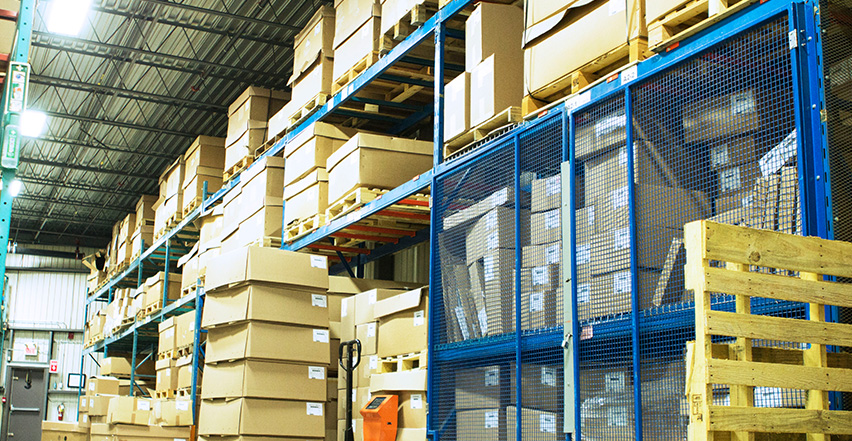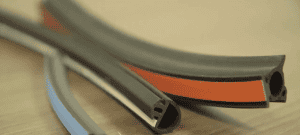Do you know how the rubber and plastic materials that Elasto Proxy sells are made? If you’re a regular reader of our blogs, you’re probably familiar with our fabrication services. However, parts fabrication is different from materials production. This week, we’ll take a look at calendering, extrusion, and molding, the three main processes for manufacturing the materials that we distribute and fabricate.
Keep reading to learn more, or contact us to request a quote for materials or fabricated products.
Calendering
Calendering produces rubber and plastic sheets in specific widths and thicknesses, and with uniform surface properties such as finish and texture. This mechanical process feeds materials through a series of large metal rollers that can be heated or cooled. The size of the rollers determines the width of the sheets that are produced.
During calendering, the material passes through the rollers so that smoothing and flattening occur. This also helps to remove surface irregularities so that sheets have a uniform finish. To achieve the desired thickness, the pressure exerted by the rollers can be adjusted. The heat that’s applied to the rollers makes the material easier to work with and varies by the type of rubber or plastic.
With rubber, heating during calendering is also used to achieve vulcanization. This chemical process forms cross-links between long rubber molecules and requires sulfur, an activator, and an accelerator. Sponge rubber also uses nitrogen gas to produce bubble-like cells. Foam rubber uses a blowing agent instead. With plastic, only heat and pressure are required for polymerization.
After the calendered material passes through heated rollers, it’s conveyed through cooled rollers so that the sheet shrinks and obtains its final size. As long, continuous sheets exit the calendering machine, sheeting is wound into rolls or cut to size. These ready-to-fabricate products are then shipped to Elasto Proxy, where they can be waterjet cut into parts, such as flat gaskets, with specific shapes and sizes.
Calendering can also be used to create the thermal and acoustic foams that Elasto Proxy laminates into sandwich-style structures. Not all foams are calendered, however, and some are extruded or molded instead. Regardless of how they’re made, these foams are laminated and then waterjet cut. Elasto Proxy can also source calendered products that contain multiple materials, such as rubber and fabric.
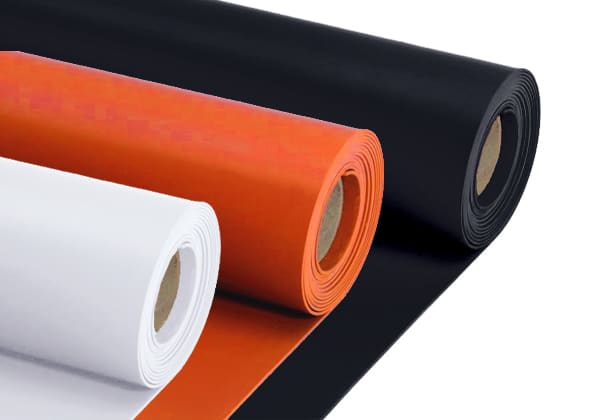
Extrusion
Extrusion produces continuous lengths of rubber and plastic with a fixed cross-section. Examples include extrusions that look like the letters D, E, or P. Some extrusions consist of a single material with one durometer, or hardness. Others consist of the same or different materials with two different areas of hardness. With co-extrusions, these two sections are merged into a single structure.
During extrusion, heated material is fed into a machine that has a cylindrical screw or auger inside of a barrel. The screw forces the material through the barrel, which is also heated. The end of the barrel contains a metal tool called a die that has an opening in a specific shape. As the screw pushes the material through this opening, the die determines the extrusion’s cross-section.
After exiting the die, the extruded material is cooled so that it solidifies and acquires its final dimensions. Extrusions can then be wound into coils, or cut into specific lengths. These ready-to-fabricate products are then shipped to Elasto Proxy for waterjet cutting into gaskets such as D, E, or P seals, or into dual durometer seals like bulb trim. Cut lengths can then be bonded into finished gaskets.
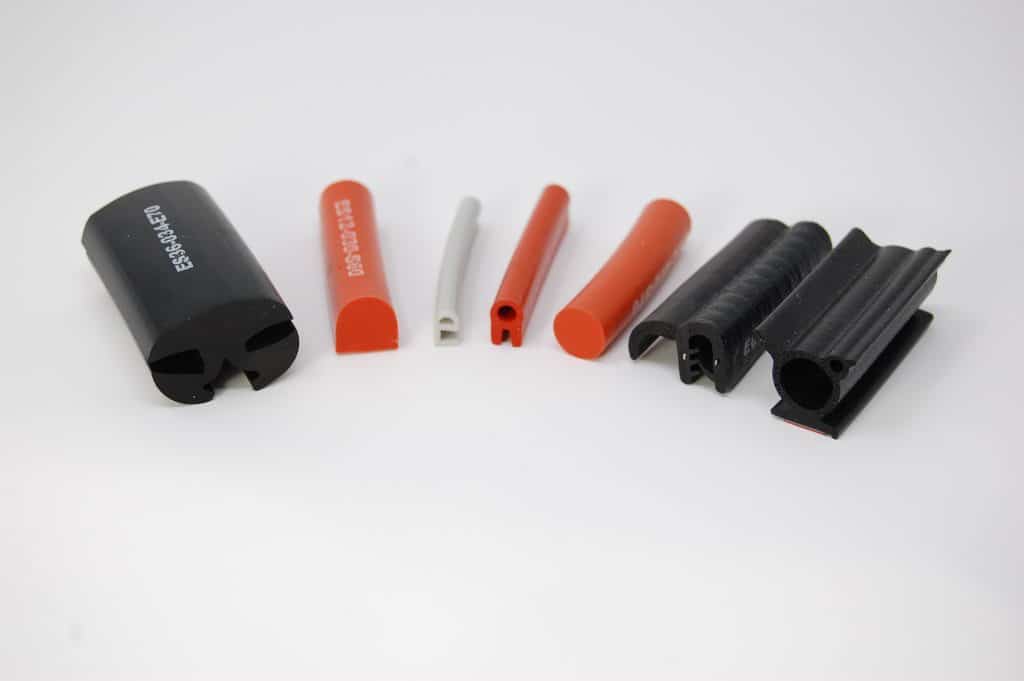
Molding
Molding produces rubber or plastic parts that have the size and shape of an open-cavity tool called a mold. Typically, solid pellets or granules are the raw material; however, liquids are sometimes used. There are several different types of molding, but they all use heat and pressure to fill the mold’s cavity. After the raw material is heated, it’s kept under pressure until vulcanization (rubber) or polymerization (plastic) occurs.
With injection molding, a cylindrical screw pushes molten material through a heated barrel and into channels that move the material into the mold cavity. Although most injection molded parts are made of a single material, the process also supports the use of multiple materials through rubber-to-metal and rubber-plastic bonding. With vibration mounts, for example, rubber is molded over a metal component.
Compression molding, a different molding process, can be used to produce rubber or plastic parts that are large and flat or that are moderately curved. The electrically conductive silicones that shield against electromagnetic interface (EMI) provide two examples. Compression molding is used to produce the EMI sheets that can be waterjet cut into gaskets. Compression molding also be used to produce EMI O-rings.
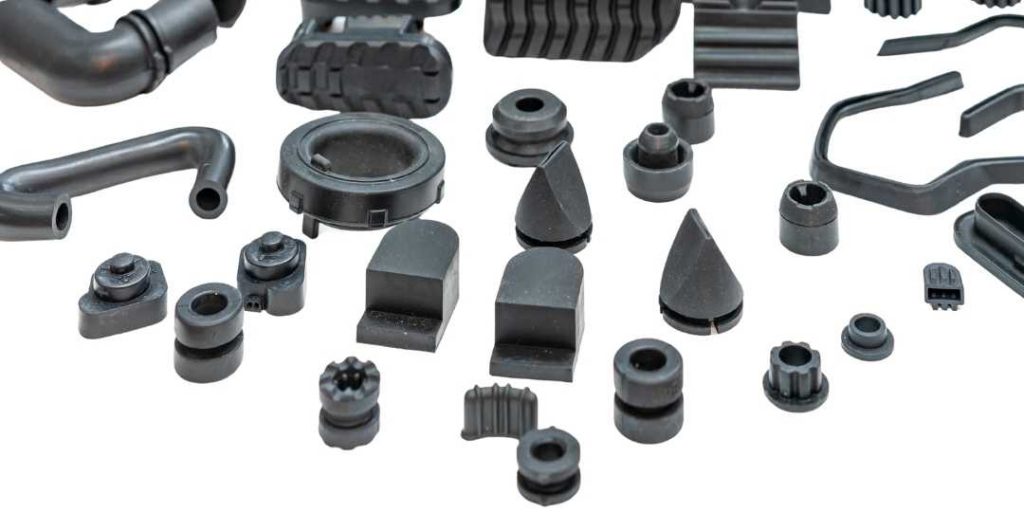
Calendered, Extruded, and Molded Materials for Distribution and Fabrication
Elasto Proxy can source the rubber and plastic materials that you need and is both a distributor and a fabricator. We work with a geographically diverse and carefully-vetted network of supplier partners and can help you reduce the risks associated with stockouts or non-compliant materials. We can also store the materials you buy from us in our warehouses so that you can save floor space and enjoy volume discounts.
To learn more about the value we provide, contact us.
